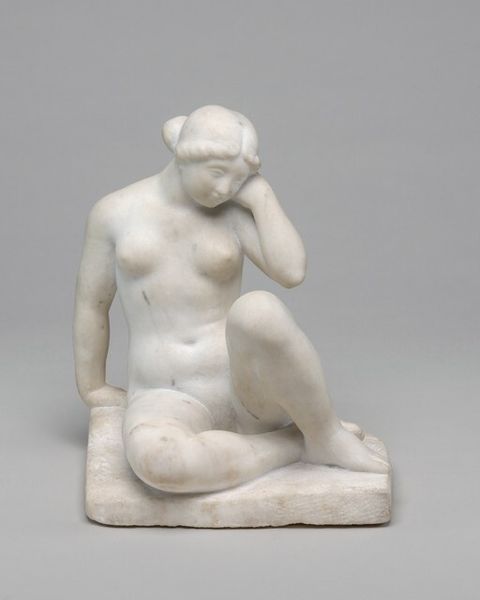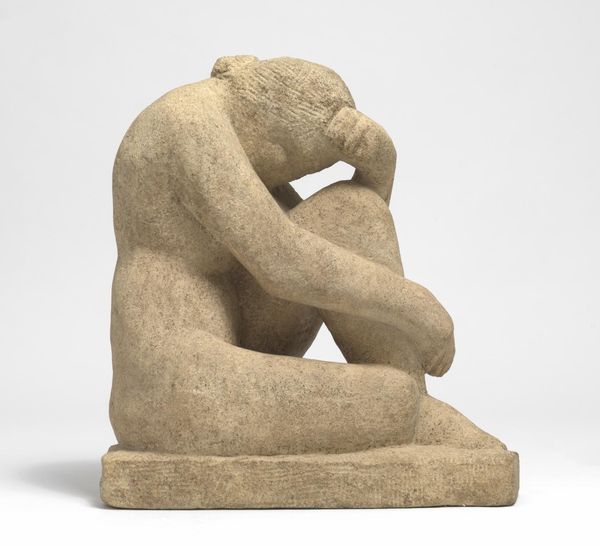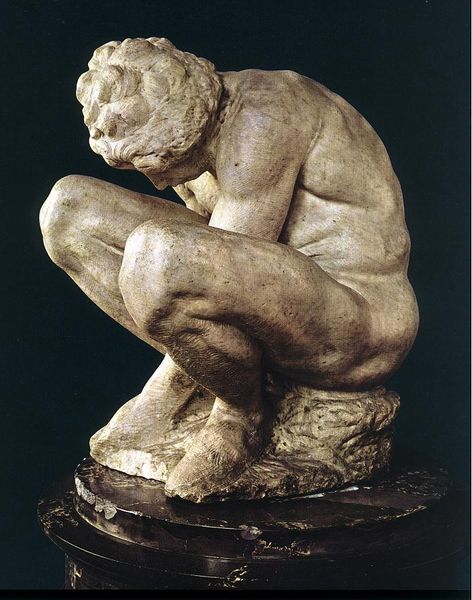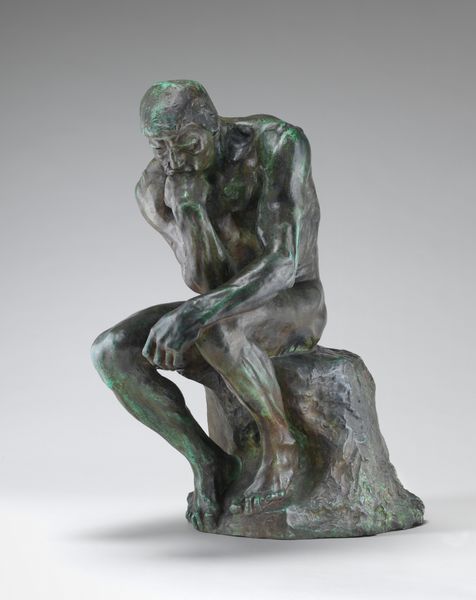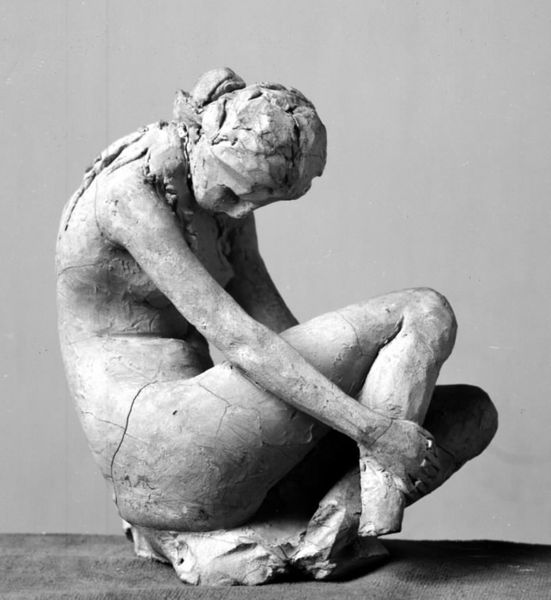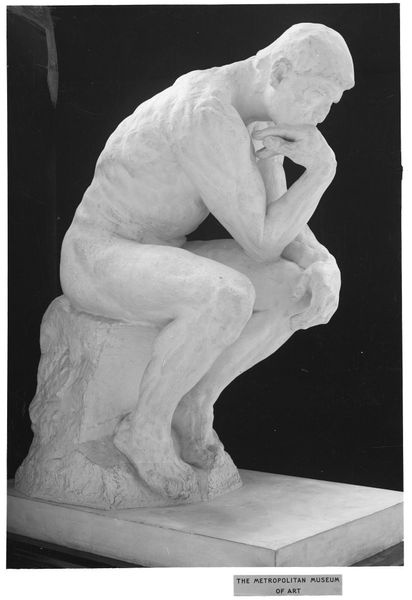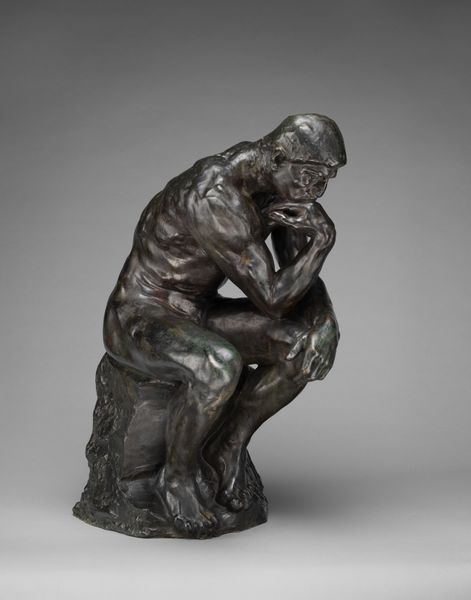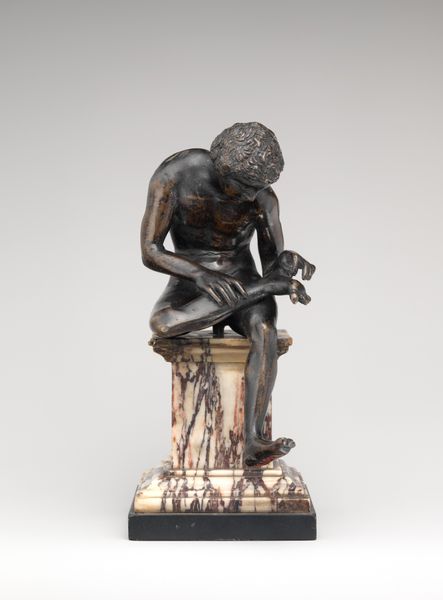
Neapolitan Fisherboy (Pêcheur napolitain à la coquille) after 1857
0:00
0:00
sculpture, marble
#
neoclassicism
#
figuration
#
sculpture
#
marble
#
nude
#
realism
Dimensions: overall: 92 × 42 × 47 cm, 390 lb. (36 1/4 × 16 9/16 × 18 1/2 in., 176.903 kg)
Copyright: National Gallery of Art: CC0 1.0
Editor: This is Carpeaux's "Neapolitan Fisherboy", sculpted in marble sometime after 1857. The figure’s so lifelike and full of playful energy. He's holding a shell to his ear and smiling – what do you make of it? Curator: I see a romantic reimagining of youth and innocence, echoing classical ideals but also hinting at something deeper. The shell is fascinating— a potent symbol. In art, shells often represent pilgrimage, or the goddess Venus. But the Fisherboy *listens* to it; do you think that affects its meaning? Editor: Definitely! He's actively engaging with it, trying to hear something within, as though he’s listening for the secrets of the ocean. Maybe it suggests a connection to a place? Curator: Precisely. Remember Naples has always been perceived as an escape, a place of hedonism. The boy could represent an allegory for someone searching for beauty and maybe danger. Notice the pose --he seems to be offering us that interior world by revealing that the music from the seashell. It's like the music opens a hidden narrative, full of wonder and risk. Do you feel that it’s unique, or perhaps belongs to something larger? Editor: Hmm…Well it’s not overtly religious. Perhaps this captures a search for belonging, maybe tied to ideas of identity? Curator: Exactly! Visual motifs aren't stagnant; their meanings evolve with us. Symbols become vehicles to traverse individual consciousness and cultural memory. A synthesis of emotion, heritage and experience… That boy, even in marble, makes me think of summers spent listening to the sea. What a powerful connection that is. Editor: That makes me think about all the things this artwork doesn’t show and suggests there is a deeper well of possible interpretations of what this fisherman represents!
Comments
No comments
Be the first to comment and join the conversation on the ultimate creative platform.

